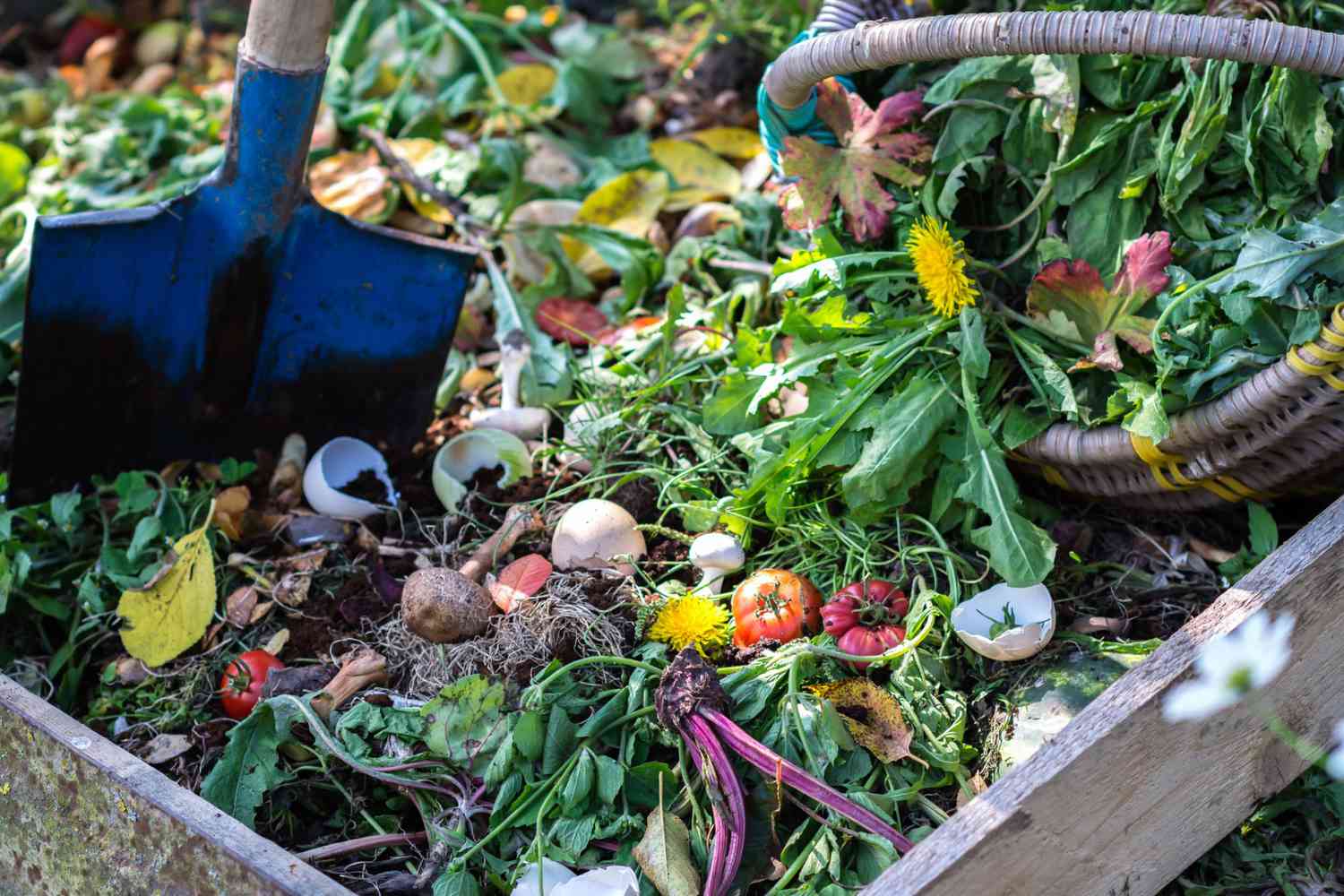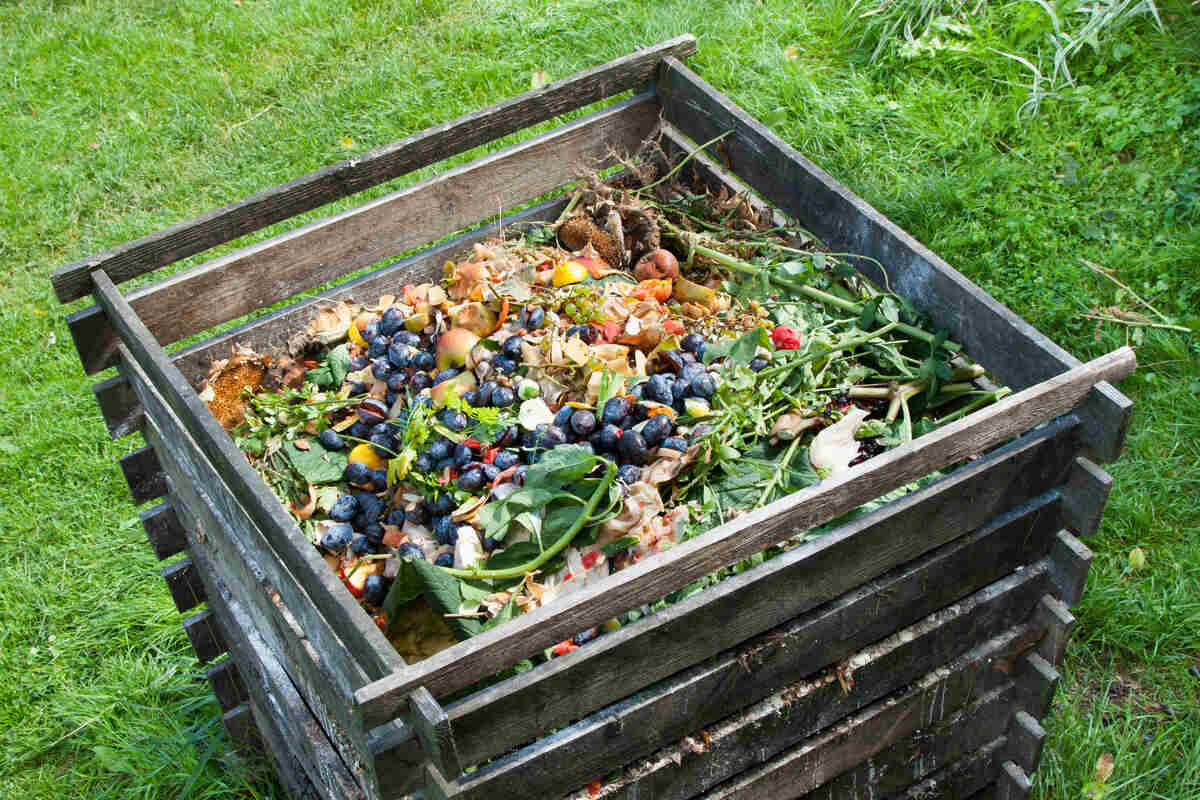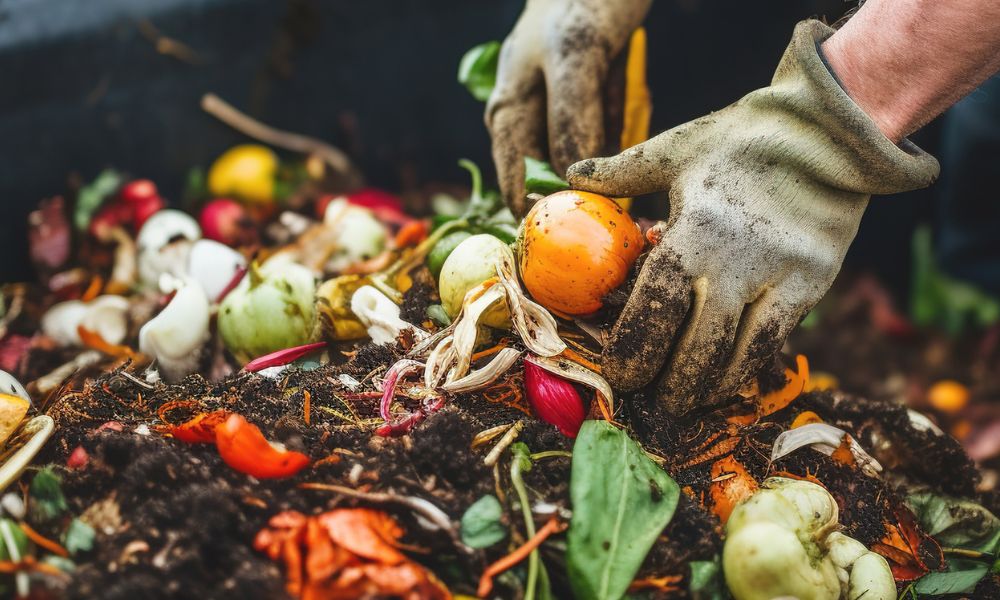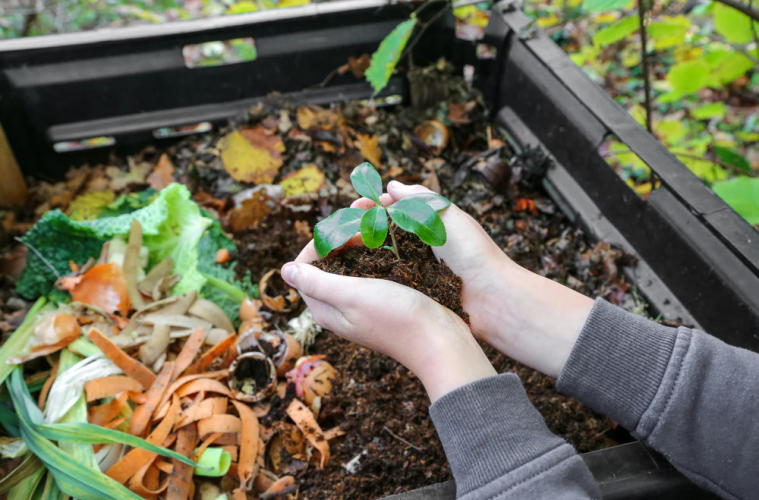Composting is the process of organic material breaking down into soil conditioners with the help of water, aeration, and microorganisms. The purpose of compost in the soil food web is an important one. Most of us are familiar with the nutrient cycle, but the most important cycle is the one beneath our feet that we do not see – the soil food web.
Soil is composed of broken-down minerals and rocks combined with decomposed organic matter and living organisms. When organic matter, such as a banana peel, is not decomposed properly the nutrients are not available for plants to absorb. Composting is a way to replenish the depleted nutrient source in your soil and ensure your plants grow healthy and abundantly.
Composting Basics
There are certain elements that are generally required to make compost:
Air: Healthy bacteria that break down organic matter needs air to flourish; a lack of ventilation will lead to bad odours and attract vermin.
Water: Beneficial organisms that live in compost heaps need water to live and move around the pile.
Vegetable matter: The key ingredient for nutrient-rich compost or soil conditioner.
Brown biodegradables: Carbon-rich materials, paper, cardboard, woodchips, newspaper, wood branches, and straw are essential for ventilation and keeping your compost heap moist.

Unsplash
Green biodegradables: Nitrogen-rich materials, grass clippings, leaf litter, and dead plant material are essential to create the right temperature and to kill seeds and diseases.
Bacteria (EMOs): Decomposes organic matter.
Worms: Digest decomposed organic matter and make worm castings high in nutrients for plants to absorb.
Soldier flies: Devour food waste faster than worms and bacteria (not essential).
Other beneficial bugs: Cockroaches, white worms, millipedes, snails, slugs, mites, and many more all help break down organic matter.
ALSO READ: 5 Things you didn’t know you could compost
Composting Methods
There are three main composting methods: aerobic (with air), anaerobic (without air), and vermicomposting (with earthworms).
1. Aerobic composting: This method entails speeding up decomposition with oxygen by turning or windrows.
Windrow is a method used on a large scale, forming long rows of organic matter and turning it mechanically or manually. Due to the labour or machinery required to turn the composting piles aerobic composting can be used on large scale, community gardens, large estates, and restaurant waste.
Aerated static pile composting layers organic matter and bulking agents like cardboard and paper to allow for ventilation. Ventilation pipes can be placed to extract or blow air into the pile, depending on the pile temperature. This method is suitable for large domestic gardens and schools.
2. Anaerobic composting: Organic matter decomposes in an airtight container with the help of microorganisms. This takes a very long time and a large space is required.
3. Vermicomposting: Red earthworms are kept in a bin to break down food scraps to create castings and worm tea. The bins can vary in size depending on the amount of organic waste produced by the household or facility. This method is ideal for apartments, small offices, and homes. It can also be scaled up to suit any size facility.

Pexels
Home Composting Methods
Open-air composting: A pile of organic garden material in your backyard. An enclosure constructed with anything you can find or a plastic container turned into a compost bin. Start the pile with a layer of brown bulking agents like straw, paper, cardboard, and woodchips. Layer your heap with garden litter or food scraps and bulking agents. Introduce a nitrogen-rich source like manure or grass clippings. Keep the pile moist.
Direct composting: Digging a trench in the ground and directly putting organic kitchen waste in and covering it with soil. This takes longer to decompose; you will need garden space for this. However, this method can attract unwanted animals into the garden.
Tumbler composting: A large bin that can be sealed and attached to a structure allowing you to rotate it with your hand. You can purchase a tumbler bin in various sizes. This is an easy and effective way to speed up decomposition by turning your compost regularly and the container keeps the temperature high.

Unsplash
Worm farm composting: There are various products to purchase, or you could make your own. All you need is a plastic container with a lid layered with brown biodegradables and food scraps. The brown biodegradables need to be kept moist (like a wrung-out sponge) but not wet to prevent rot and disease. Do not use earthworms from your garden – you can purchase earthworms at garden centres or ask a friend with a worm farm to get you started. A great by-product of this method is ‘worm tea’ – the liquid is regularly drained from the container and can be directly poured into pot plants. The worm castings are used as a soil conditioner in the garden or pots.
EMO composting: This is an anaerobic method. Food scraps and organic waste are kept in a sealed bin. A mix of microbes is added and the liquids that are produced are drained off until organic waste is fermented and ready to be used as compost. This method is odourless. Bokashi bins are used for indoor composting and is ideal for apartments.
Combination composting: A combination of open-air, direct, vermicomposting, and EMO composting. This method is typically used by people who are familiar with the decomposition process and combines practices as they see fit.
ALSO SEE:
Written by Charlotta Carolissen and published in Food&Home Autumn 2023.
Feature image: Pexels

